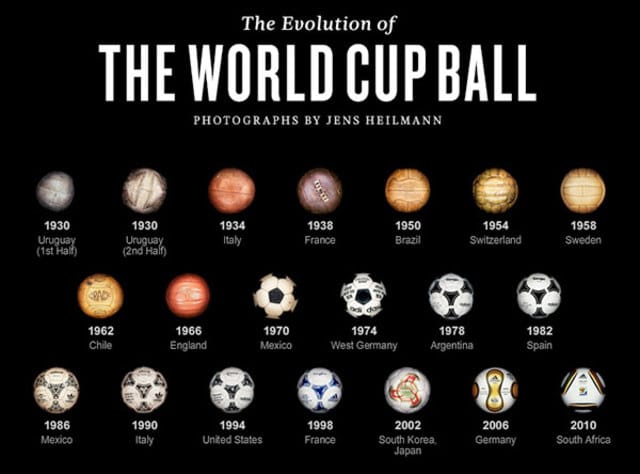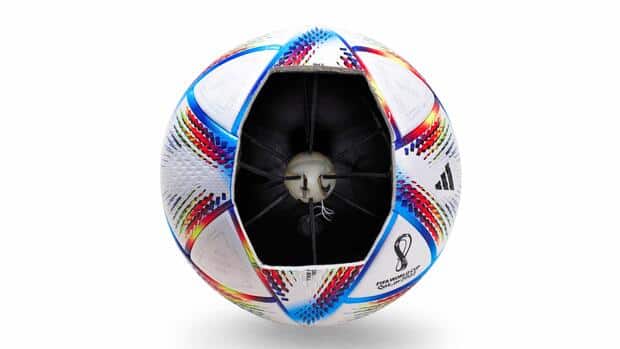The History of Soccer Balls
Soccer, also known as football, is the most popular sport in the world. The sport is played in almost every country on the planet, and its most essential piece of equipment is the soccer ball. The soccer ball has undergone significant changes over the centuries, from its earliest beginnings as a crude object made from animal bladders to today’s high-tech designs. In this article by fcscout.com, we will take a look at the history of soccer balls and their evolution into the modern-day equipment used by players all over the world.

The Early Years of Soccer Balls
The history of soccer balls can be traced back to ancient times when early civilizations played games with balls made from natural materials like animal bladders, pig’s heads, and even human skulls. However, it wasn’t until the 19th century that soccer balls began to take on a more standardized shape and design.
The first soccer balls were made from inflated animal bladders covered in leather. They were crude and unreliable, with the shape and size of the ball varying from game to game. The early soccer balls were also difficult to control and unpredictable, leading to players developing unique playing styles to deal with the ball’s idiosyncrasies.
As the game of soccer grew in popularity, so did the need for standardized equipment. In the mid-1800s, soccer balls began to be produced in factories using mass production techniques, which led to more consistent and reliable soccer balls. The leather coverings became more durable, and the shape of the balls began to become more standardized.
The Rise of Synthetic Materials
In the early 1900s, manufacturers began to experiment with synthetic materials in the production of soccer balls. Initially, this involved using rubber, which made the ball more resistant to water and easier to control. However, rubber soccer balls were prone to losing their shape over time and would often become lopsided.

In the 1960s, manufacturers began to use synthetic materials like PVC in the production of soccer balls. These new materials made the balls more durable and resistant to water, but they still had a tendency to lose their shape over time.
In the 1970s, Adidas introduced the Telstar soccer ball for the 1970 World Cup in Mexico. The Telstar was the first soccer ball to feature a black-and-white hexagonal design, which made it easier to see on television. The Telstar was also the first soccer ball to use synthetic materials exclusively, which made it more durable and resistant to water.
The Modern Era of Soccer Balls
In the 21st century, soccer balls have become high-tech pieces of equipment, with innovative designs and features that help players improve their game. The introduction of new materials and manufacturing techniques has led to a wide range of soccer balls that cater to different playing styles and conditions.
One of the most significant developments in soccer ball technology is the introduction of micro-texture designs on the surface of the ball. Micro-texture designs help to improve the aerodynamics of the ball and give players more control over their shots. This technology is used in many of the high-end soccer balls used by professional players.

Another innovation in soccer ball design is the use of foam layers inside the ball. Foam layers help to improve the ball’s accuracy and reduce its weight, making it easier for players to control and manipulate the ball during play.
High-tech soccer balls also feature advanced bladder systems that provide better air retention, ensuring that the ball stays inflated for longer periods of time. This technology helps to maintain the ball’s shape and consistency, allowing players to focus on their game without worrying about the ball’s performance.
The Future of Soccer Balls
As technology continues to advance, the future of soccer ball design is bright. Manufacturers are constantly experimenting with new materials and designs to improve the performance of soccer balls.
One potential future development is the use of smart technology in soccer balls. Smart soccer balls could feature sensors that provide real-time data on the ball’s position, speed, and trajectory. This information could be used to provide players with instant feedback on their performance and help them make adjustments to their technique.
Another potential future development is the use of environmentally friendly materials in soccer ball production. As the world becomes more aware of the need for sustainable practices, manufacturers may start to use materials that are biodegradable or made from renewable sources.
Conclusion
Soccer balls have come a long way since their early beginnings as crude objects made from animal bladders. The evolution of soccer ball technology has led to the development of high-tech designs that provide players with better control, accuracy, and durability. As technology continues to advance, we can expect to see further developments in soccer ball design that will help players improve their game and take the sport to new heights. The history of the soccer ball is a testament to the importance of innovation and the impact that technology can have on the game of soccer.
EXPLORE MORE CLUBS!
Explore more professional clubs by continent.






